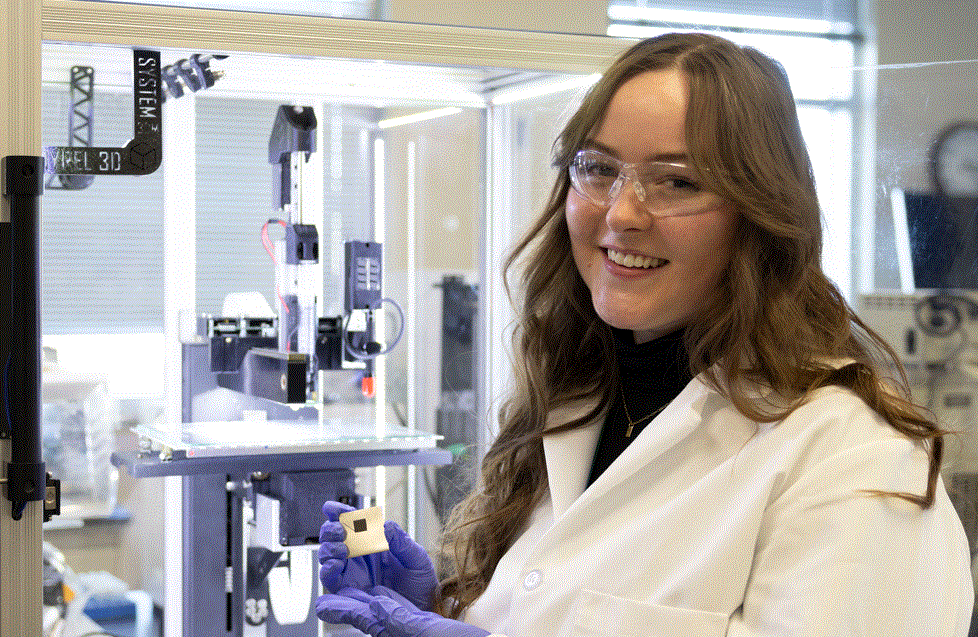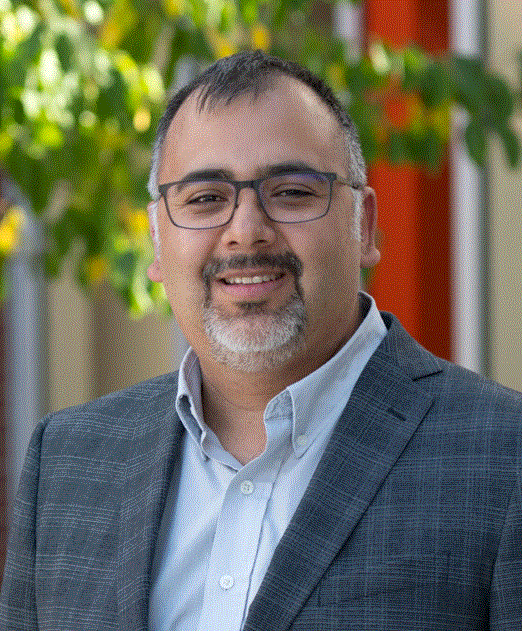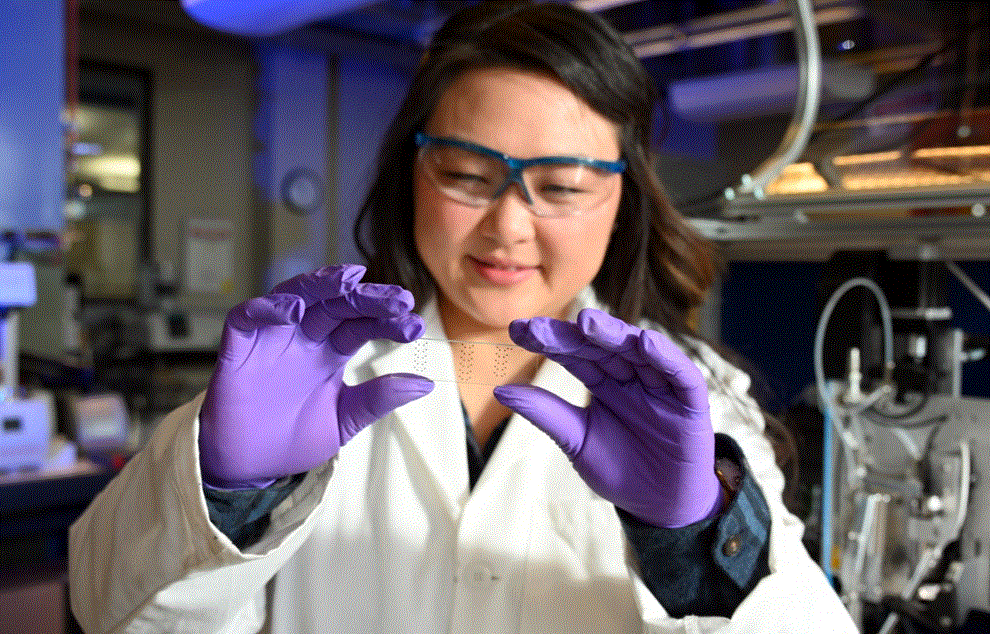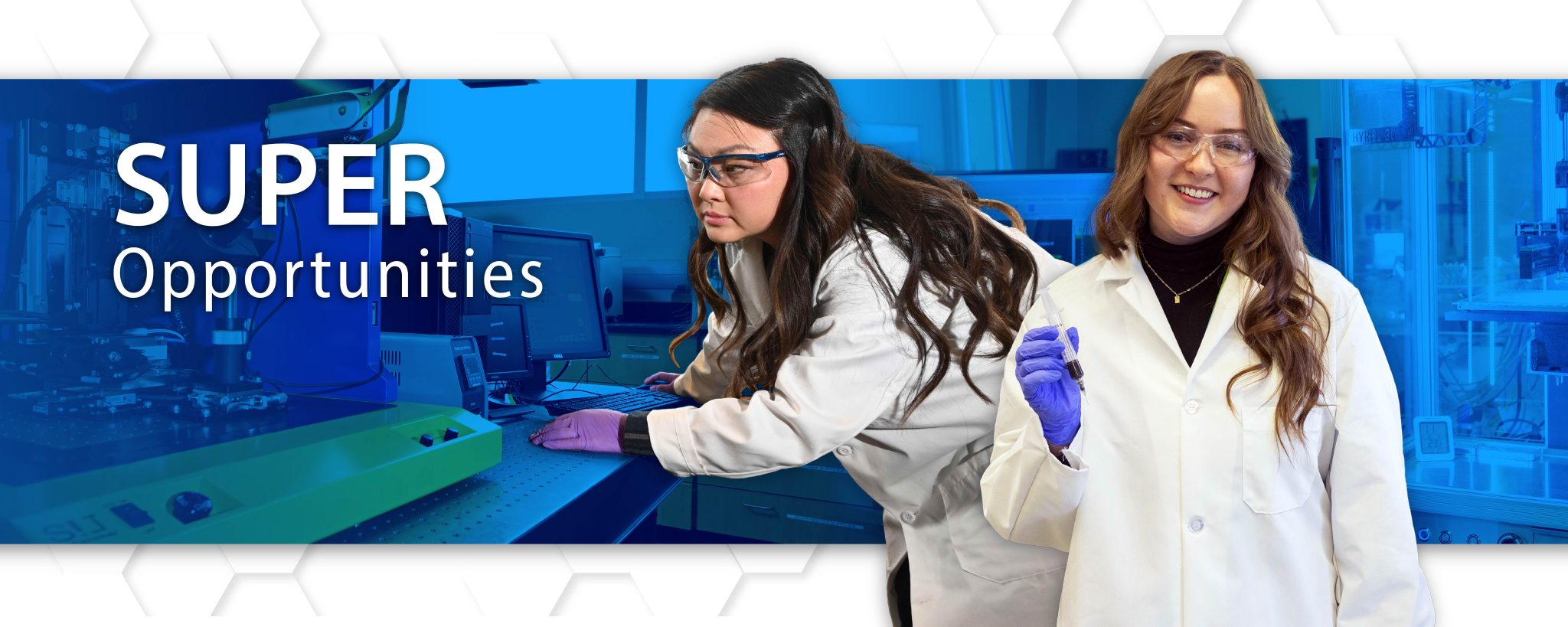Newswise — While Joy Morin was an undergraduate intern at the Idaho National Laboratory (INL), she discovered her interest in developing nuclear fuels and technology. Her mentor recommended she pursue a graduate degree at Boise State University in materials and engineering to continue her research.
Morin is now a graduate fellow and part of an INL-Boise State collaboration at the Advanced Test Reactor looking at how breaking down magnetostrictive materials into nanoparticles can create a special 3D-printable ink. Magnetostrictive is a term to describe materials that can convert magnetic energy into kinetic energy, which makes them useful in engineering things like sensors.
“Getting to apply the knowledge I’ve learned throughout my materials education and continuing to learn more about it has been a great part of being involved in this work. It’s been really cool to expand my knowledge and hone in on a specific topic,” Morin said. “And by doing it at INL, you get access to state-of-the-art machines, labs and researchers that aren’t found at most universities.”

INL and Boise State have worked together for several years to partner researchers with faculty and provide training and workforce development for students going into high-demand technical industries. Earlier this year, INL and Boise State signed an agreement to delve deeper into alternative energy research. Known as the Strategic Understanding for Premier Education and Research (SUPER) agreement, it allows the lab to work with universities to explore a variety of research collaborations and expand opportunities for students, faculty members and researchers. One focus area under the agreement with Boise State is advanced manufacturing and materials for extreme environments.
“Boise State has rapidly grown and advanced our research enterprise, particularly in areas that are so critical for Idaho and our nation. We are committed to collaborating with industry and government partners to educate American workers and set up businesses for success in global markets,” said Marlene Tromp, Boise State president. “This new SUPER agreement will produce incredible new knowledge and pay dividends for years to come.”
Boise State researcher and Advanced Manufacturing Deputy Director of Academic Research Dave Estrada agrees. He has been a key player in bringing together students, faculty and researchers in advanced manufacturing for nearly 10 years. Estrada feels the benefits of the partnership are already being seen and the impact will continue for many years to come.
“Boise State and the lab have developed an infrastructure that’s promoted rapid feedback between the two parties,” said Estrada. “As a result, we now have a highly effective ecosystem that supports work on advanced manufacturing for extreme environments, which is a relatively new research field. It’s also opened many beneficial new funding opportunities. All of this would not have been possible without the support of INL and the Department of Energy.”

Kiyo Fujimoto was one of the first Boise State advanced manufacturing interns at the lab in 2016. She is now a researcher at INL. Like Morin, she believes the university’s partnership with INL has been essential to growing research in advanced manufacturing.
“Working with INL has allowed access to equipment and research expertise that can provide students with educational opportunities and experiences only possible through the partnership,” stated Fujimoto. “I’m excited to see how the SUPER agreement will continue to move things forward.”
As the nation’s energy demands continue to increase, continued research will offer wide benefits.
“Advanced materials that can withstand extreme environments are crucial to moving nuclear energy forward,” said Estrada. “We need materials that can withstand being inside a nuclear reactor to extend the life of the fuel and, overall, build better reactors to secure our nation’s energy future.”
To Morin, there is one thing that’s been more impactful for her than the access to world-class equipment, facilities and researchers.
“Everyone I’ve worked with at INL and Boise State has been so great at advocating for me and other students,” said Morin. “They are so supportive and welcoming, which has been immensely helpful in my confidence to do this work.”

About Idaho National Laboratory
Battelle Energy Alliance manages INL for the U.S. Department of Energy’s Office of Nuclear Energy. INL is the nation’s center for nuclear energy research and development, and also performs research in each of DOE’s strategic goal areas: energy, national security, science and the environment. For more information, visit .
Follow us on social media: , , and .


